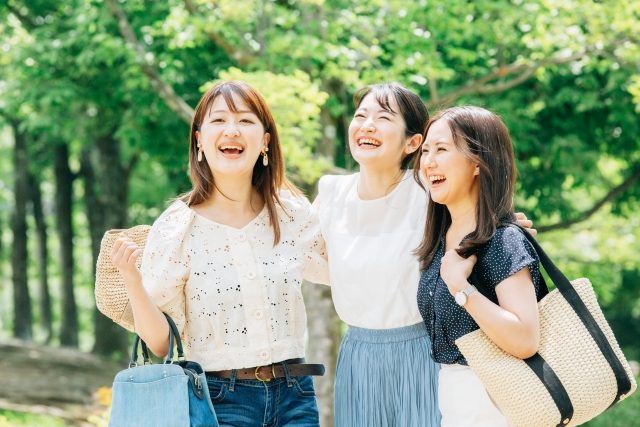INDEX
Welcome to a deep dive into Japanese communication styles! In this blog, we'll explore the subtle nuances and unwritten rules that shape interactions in Japan. Whether you're planning a visit, working with Japanese colleagues, or simply curious about cultural differences, these insights will help you navigate conversations with confidence and sensitivity.
Japanese communication is built on a foundation of consideration for others, indirect expression, and maintaining harmony. While these concepts might seem challenging at first, understanding them opens up a world of meaningful connections and mutual respect. Let's explore how the delicate balance of verbal and non-verbal cues creates the unique tapestry of Japanese conversation.
From the importance of honorific language to the power of silence, we'll uncover the key characteristics that make Japanese communication distinct and how these patterns shift depending on context, relationships, and settings. Join me as we discover practical strategies for effective cross-cultural communication and build bridges of understanding.
Four Characteristics of Japanese Communication
First, let's look at four characteristics of Japanese communication. You'll likely find that there are different ways of thinking and different rules compared to communication in your country.
1. Showing Consideration Through Indirect Expression
In Japanese communication, it's important to avoid direct expressions and emotional language. Rather than saying "That's wrong," it's preferable to use softer phrases like "That approach might be a bit difficult."
Indirect expression in Japanese culture stems from deep consideration for others. Even in business settings, responding with "I'll consider it" when declining a proposal helps avoid disappointment and conflict that might come from direct rejection.
When offering criticism or suggestions for improvement, instead of saying "This part is wrong," it's better to frame it positively: "If you change this part this way, it might become even better." This allows for constructive dialogue without hurting the other person's self-esteem.
This delicate balance of preserving the other person's dignity while effectively conveying necessary messages represents the profound nature of Japanese communication.
2. Nurturing Relationships Through Honorific Language and Expressions of Gratitude
Honorific language plays a crucial role in Japanese communication. Japanese honorifics include "respectful language(尊敬語 = sonkei-go)," "humble language(謙譲語 = kenjo-go)," and "polite language(丁寧語 = teinei-go)," each used according to the relationship with the other person and the situation.
The essence of honorific language isn't just about formal speech patterns but about showing respect for others. Mastering appropriate honorific language is both a basic skill for functioning in Japanese society and an important tool for maintaining proper psychological distance in relationships.
Expressions of gratitude and apology such as "thank you" and "I'm sorry" are also frequently used in Japanese communication. Saying "thank you" even for small kindnesses acknowledges the value of the other person's actions and deepens the relationship.
While honorific language is less common among family members in modern times, expressions of gratitude and apology like "thanks" and "sorry" remain important within families. Honorific language and expressions of gratitude are vital communication tools that strengthen bonds and promote mutual understanding.
3. Valuing Overall Harmony
A distinctive feature of Japanese communication is the tendency to prioritize the overall atmosphere and harmony rather than individual opinions. Based on the ancient value of "harmony above all," group consensus and cooperation often take precedence over individual assertions.
In meetings and group discussions, people are expected to first listen to others' opinions and understand the general flow. When expressing one's own opinion, it's common to preface it with phrases like "After hearing everyone's opinions..." or "This is just my personal thought..." to show consideration for group harmony.
As represented by the concept of "reading the air," the ability to perceive unspoken situations and atmospheres is highly valued in Japanese society. For example, even without direct opposition to a proposal in a meeting, one is expected to notice negative reactions from silence or subtle changes in facial expressions and respond flexibly.
This emphasis on overall harmony helps avoid unnecessary conflict and contributes to building long-term relationships and organizational stability.
4. Utilizing Non-Verbal Messages
In Japanese communication, non-verbal elements play an important role alongside words. Research suggests that most human communication is conveyed through non-verbal elements.
Nodding is a representative non-verbal expression in Japanese communication. It conveys not only agreement but also important messages like "I'm listening," "I understand," and "Please continue."
The use of silence (ma = 間) is also characteristic of Japanese communication. While silence in conversation is often avoided in Western cultures, Japanese culture recognizes meaning in silence. When faced with an important decision, silence indicates serious consideration of the issue, and an immediate answer might be seen as rash.
Facial expressions, eye contact, posture, and the angle and depth of bows also convey rich messages. Physical distance between people and seating arrangements function as non-verbal messages that express relationships and the atmosphere.
By effectively balancing verbal and non-verbal communication, richer and more nuanced communication becomes possible. Non-verbal means play a particularly important role in conveying subtle nuances and emotions.
Four Factors That Change Japanese Communication Styles
Japanese communication style is characterized by indirect expressions, use of honorific language, emphasis on group harmony, and effective use of non-verbal communication. However, these characteristics aren't fixed - they change and combine differently depending on the situation. What factors influence these communication styles? Here are four main factors:
1. Casual vs. Formal Settings

The atmosphere and purpose of a setting greatly influence communication style.
In casual settings, such as meals with friends or hobby group activities, relatively direct expressions are often used. Honorific language decreases and casual phrases like "isn't it?" or "don't you think?" increase. Personal opinions and emotions are expressed more honestly, and subjective statements like "I think this way" are generally welcomed.
In formal settings, such as business meetings or official events, indirect expressions are preferred. Circumlocutory phrases like "it might be..." or "it could be considered that..." become more common, with statements emphasizing group harmony. Non-verbal messages like nodding, eye contact, and posture become more important, and the ability to "read the atmosphere" becomes more crucial than words themselves.
2. Age and Status Differences

Age differences and social status significantly impact communication style.
When speaking to superiors, honorific language increases with polite expressions like "would you please..." or "I humbly believe..." Direct negation or assertion of opinions is avoided in favor of indirect, modest expressions such as "I would appreciate your consideration" or "if it pleases you."
Conversely, when speaking to subordinates, expressions with appropriate familiarity tend to increase. However, Japanese society values showing minimal respect regardless of hierarchical relationships, so honorific language is rarely eliminated completely.
3. Relationship Intimacy

The level of intimacy in relationships also changes communication style.
With long-time friends and family, more direct expressions increase, making honest conversations easier. Honorific language is minimized, allowing free communication including jokes and light teasing. Personal opinions can be expressed without reservation, and straightforward objections like "I disagree" can occur without damaging the relationship.
In contrast, conversations with new acquaintances feature more honorific language and greater emphasis on indirect expressions and non-verbal communication. People avoid strongly pushing their opinions, preferring neutral expressions like "that's one way to look at it." There's also a stronger tendency to carefully progress the conversation while gauging the other person's reactions.
4. Public vs. Private Spaces

The public nature of a communication space also influences style.
In public spaces like trains or restaurants, polite and restrained communication is expected. Honorific language frequency increases, and voice tones become more subdued. Emotional expressions are minimized, with negative emotions like anger or dissatisfaction particularly restricted.
In contrast, private environments like homes or gatherings with close friends allow more direct and emotionally rich expressions. Honorific language decreases, and honest conversations increase. Emotional expressions like "That's unbelievable!" or "I'm so happy!" occur freely, creating more open communication.
Tips for Foreigners to Communicate Smoothly with Japanese People
Foreigners have two main approaches when communicating with Japanese people: "communicating from outside the Japanese community" and "communicating from inside the Japanese community." The former is sufficient for short-term visitors, but the latter becomes necessary for those staying long-term or wishing to build deeper relationships in business or educational settings.
Communicating from Outside the Japanese Community
Japanese people generally recognize foreigners as "non-Japanese" with "different cultural backgrounds." As a result, they often show a degree of tolerance toward expressions and behaviors unique to foreigners.
Cultural Differences That Are Generally Accepted
Japanese people tend to accept the following aspects of foreigners' communication styles as "cultural differences":
- Expressive emotions and vocal tones
- Not useing of honorific language (keigo)
- Relatively direct expressions and questions
- Different gestures and body language
Many Japanese people find these differences interesting and approach them with curiosity. Having perspectives and ways of thinking that differ from Japanese norms can actually become refreshing topics of conversation.
Points to Be Mindful Of
However, not everything is permissible in all situations. The following behaviors may cause discomfort even when coming from foreigners:
- Excessively loud voices or flashy behavior in formal or public settings
- Strongly contradicting others directly or making statements that cause public embarrassment
- Disrespectful attitudes in situations with clear hierarchical relationships
These behaviors exceed the level of tolerance for "cultural differences" and may cause the community to distance itself from you.
Communicating from Inside the Japanese Community
If you want to be accepted as a member of a Japanese community during a long-term stay, workplace, or school, a deeper understanding of Japanese communication is required.
Skills Needed to Join the Inner Circle
- Understanding others' intentions by reading the atmosphere and interpreting indirect expressions
- Understanding hierarchical relationships based on age and social position, and to use honorific language when appropriate
- Reaching consensus by listening to others' opinions without overly emphasizing one's own views
Mastering these skills will help Japanese people recognize that you "share their perspective," allowing you to build deeper relationships. Particularly in workplace environments, this understanding significantly impacts the smooth progress of work and the building of trust.
Leveraging the Advantages of Being a Foreigner
While integrating deeply into Japanese communities, you don't need to completely abandon your identity as a foreigner. Rather, finding a balance between both aspects allows you to demonstrate your unique value:
- Straightforward expressions of joy or pleasure, when moderate, are often received positively
- Perspectives from different cultural backgrounds can be valued as new ideas or solutions
- Experiences and knowledge unique to foreigners become valuable conversation topics
Japanese people sometimes admire or find refreshing the direct emotional expressions of foreigners, especially since they tend to restrain their own expressions. Rather than suppressing these aspects, leveraging them can help build richer relationships.
My thoughts on how to communicate with Japanese
I once had a Brazilian friend from my youth ask me, "A Japanese friend I was having a great time with until yesterday suddenly became distant. Why did that happen?"
At the time, I vaguely replied in a typical Japanese way, "Hmm, I wonder why..." But I believe there must have been some reason, perhaps differences in direct expression or emotional communication styles.
In fact, communication among Japanese people involves so many unspoken rules that even Japanese people find it exhausting at times. When I went abroad, I found the straightforward communication style—where "what you express in words is what you mean to convey"—refreshing, even as a Japanese person.
There are certainly benefits to "being considerate of others" by restraining emotions, using indirect language, or showing politeness through honorific speech. However, this ambiguity can also prevent people from expressing their feelings directly, which may keep relationships from deepening or make communication unnecessarily time-consuming.
Personally, I like the gentle Japanese communication style that values consideration for others and understanding what isn't explicitly stated. However, we must also recognize the undeniable fact that "sometimes feelings cannot be mutually understood unless they're put into words."

Author : Katsu
Born and raised in Japan. After traveling solo to various countries starting at age 20, I was shocked to discover how peculiar Japanese culture and thinking appeared from a global perspective. Now I find these differences fascinating and want to incorporate new cultural perspectives and ways of thinking.
RELATED ARTICLES
Got questions about how Japanese think, act, or some of Japan’s quirky cultural habits? No matter how big or small—drop your thoughts in the comments below!

